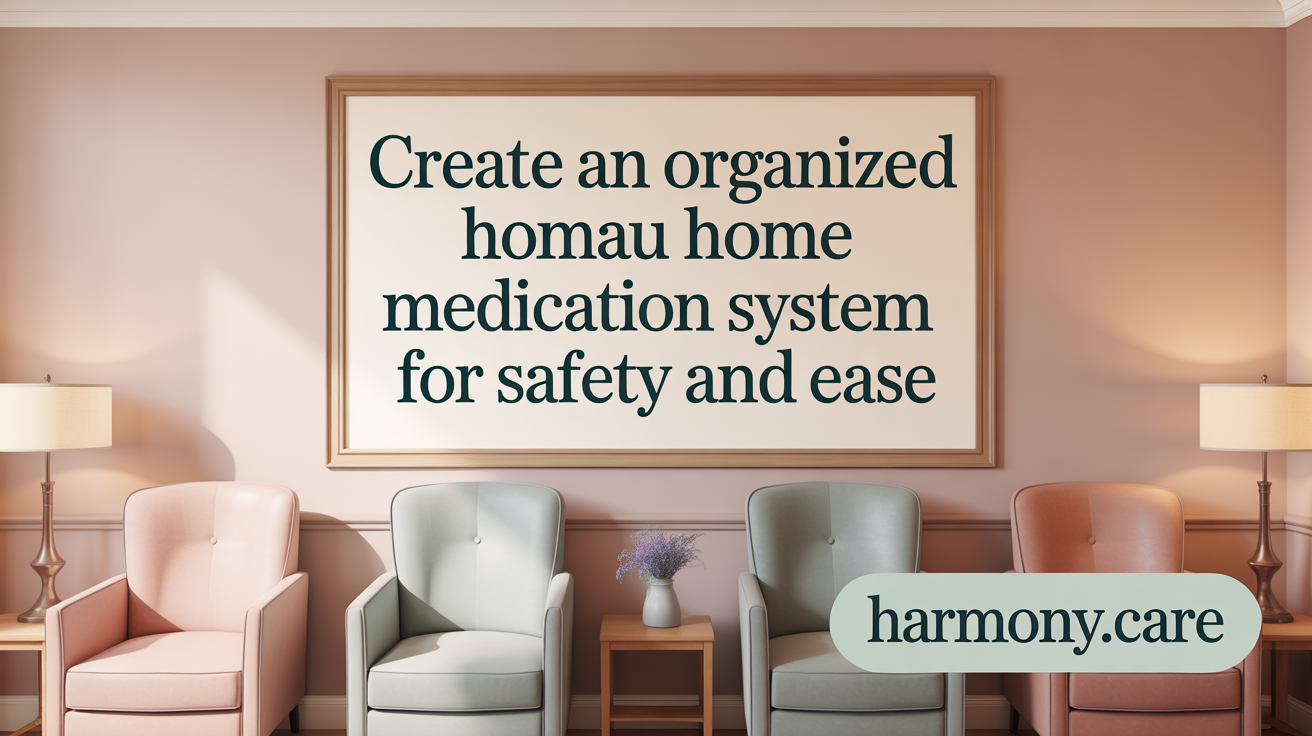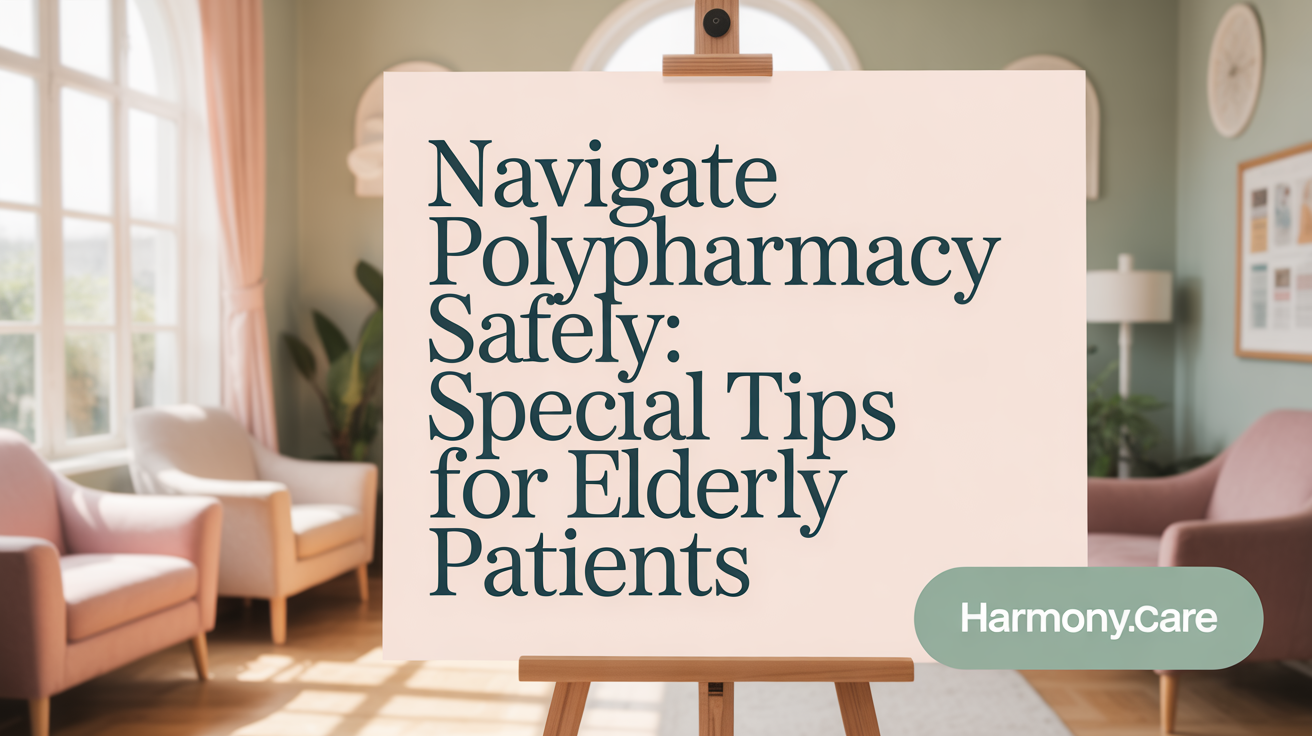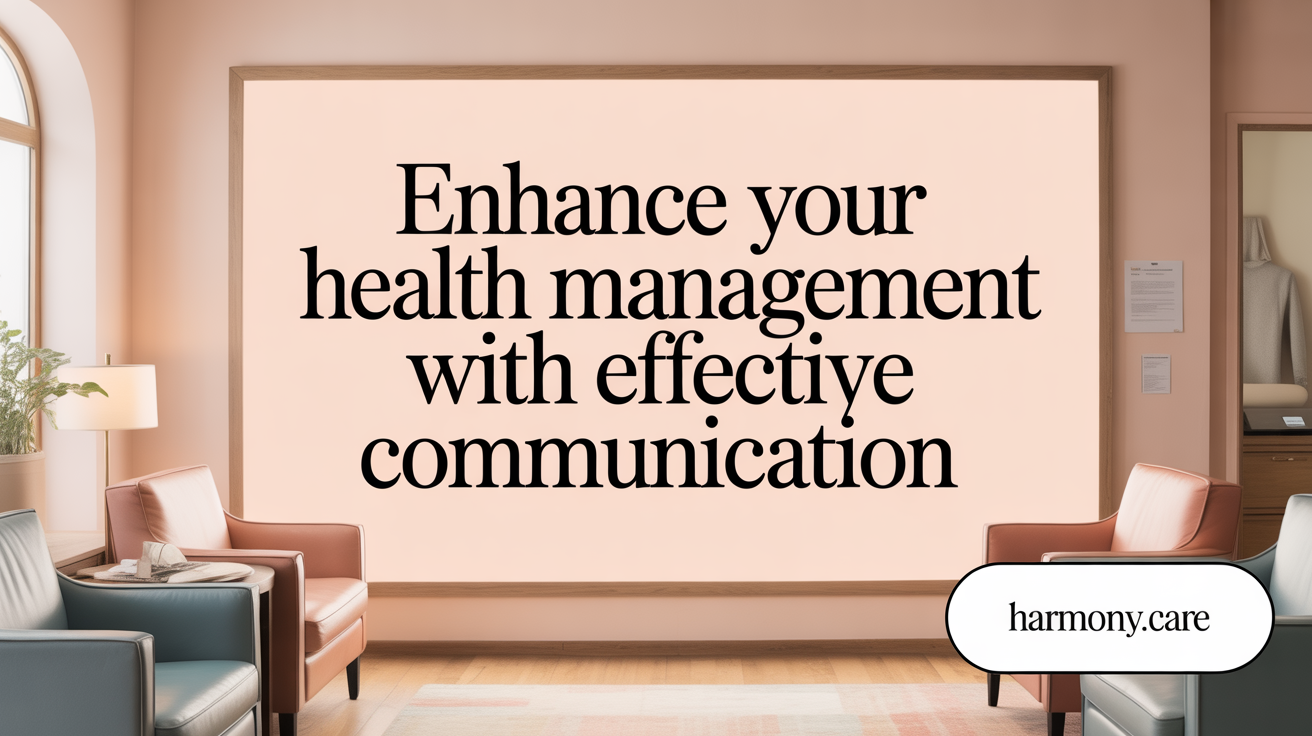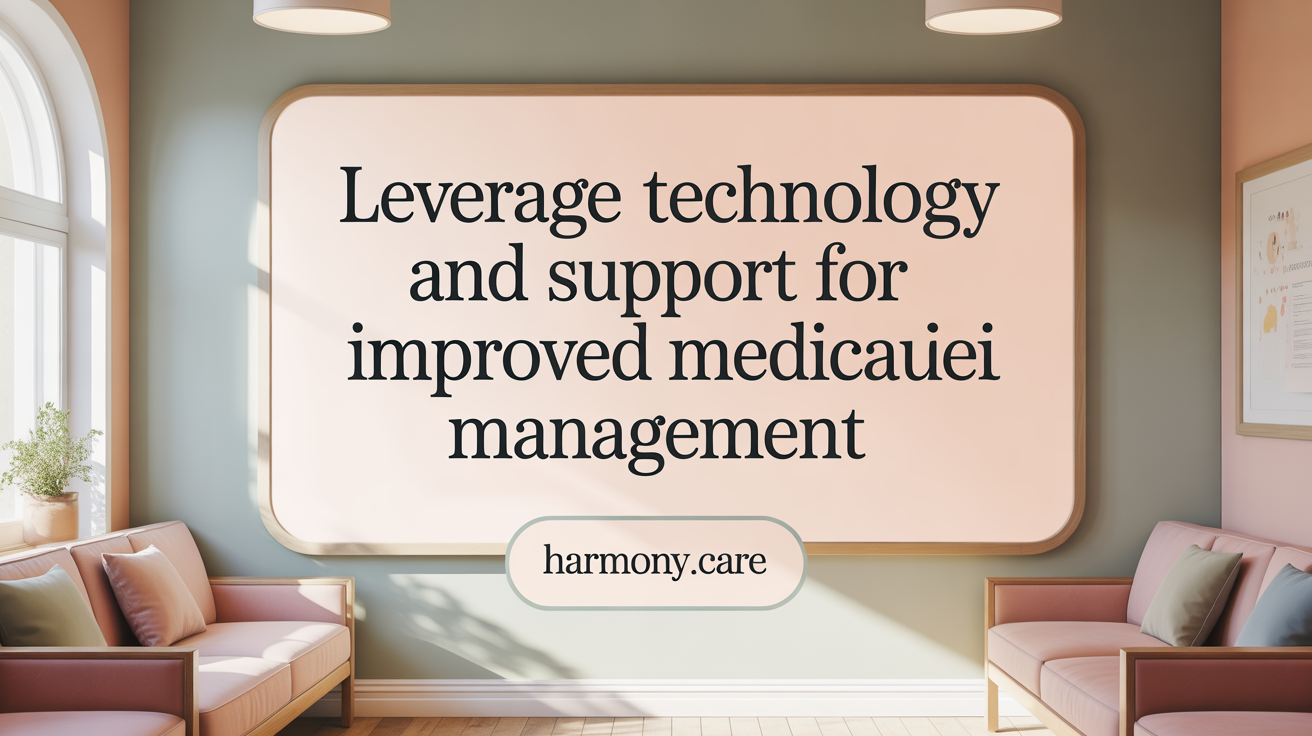Managing Multiple Medications with Confidence at Home
Handling multiple medications at home can be a complex and daunting task, especially when dealing with five or more prescription drugs. Effective management is vital to prevent medication errors, reduce the risk of drug interactions, and ensure proper adherence to prescribed regimens. This article explores best practices for organizing medications, maintaining safety, improving adherence, and communicating effectively with healthcare providers to support patient health and well-being.
Foundations of Safe Medication Management
What are safety tips for medication management?
Managing multiple medications safely is vital, especially for those taking five or more prescriptions. The first step is maintaining an updated list that includes all medications, dosages, purposes, and prescribing doctors. This helps prevent harmful drug interactions and ensures clear communication with healthcare providers.
Adhering to the Five or Seven Rights of medication administration can greatly reduce errors. These include verifying the right patient, right drug, right dose, right time, and right route. Using barcode scanning systems when available adds an extra layer of safety.
Proper storage is equally important. Store all medicines in their original containers, in a cool, dry place away from heat, humidity, and children. Avoid storing medications in the bathroom due to moisture. Regularly check expiration dates and visually inspect medications for discoloration or changes in appearance.
Effective communication with healthcare providers is crucial. Always report any side effects or adverse reactions promptly. When starting new medications, review instructions carefully and ask pharmacists or doctors about possible interactions and costs.
Proper disposal of expired or unused medicines is essential to prevent misuse or accidental ingestion. Use pharmacy take-back programs or follow local guidelines for safe disposal.
Incorporating organizational aids such as pill organizers, alarms, and medication management apps can improve adherence. When using these tools, ensure doses are taken correctly, and double-check medication schedules regularly.
By following these guidelines—keeping accurate records, storing drugs safely, disposing of medications properly, monitoring effects, and verifying each dose—patients can ensure safer, more effective medication management.
Organizing Medications at Home for Accuracy and Ease

How can medications be effectively organized at home?
An organized medication system is essential to ensure safety, adherence, and ease of access. Start by designating a specific spot in your home that is easily accessible and away from places with humidity or heat, such as the bathroom or kitchen. A dedicated cabinet or drawer can serve as a central location for all medications.
Use clearly labeled containers, such as small bins or boxes, to categorize medications by type, purpose, or frequency of use. This helps prevent confusion and makes it easier to locate the right medicine quickly. Incorporate compartmentalized storage solutions like pill organizers with separate sections for morning, afternoon, evening, or specific days of the week. These tools provide a visual overview of your medication schedule.
Label each container or compartment with large, easy-to-read tags or stickers, and consider pairing labels with visual aids such as color-coding or symbols to enhance recall and adherence.
For ongoing management, create daily and weekly medication schedules using printed charts or digital apps. Keep these schedules posted near your medication storage to serve as reminders.
To ensure medications remain effective, always store them in a dry, cool, and dark place — avoiding humid areas like bathrooms or kitchens. Check expiration dates regularly and dispose of expired or unused drugs properly, using medicine take-back programs when possible.
Additional organization can include using spice racks or small jars to store accessories like pill cutters, spatulas, or applicators. Small tiered or stackable organizers can also help keep accessories neat and accessible.
By implementing these straightforward tips—dedicated storage, clear labeling, compartmentalization, and proper storage conditions—you can streamline medication management, reduce errors, and enhance safety at home.
Techniques and Tools to Enhance Medication Adherence

What techniques can improve medication adherence?
Improving medication adherence is essential for effective treatment and avoiding health complications. Combining multiple strategies can significantly boost consistency and safety.
One effective approach is creating routines aligned with daily habits. For example, taking medications at the same time every morning or bedtime, linked to daily activities like brushing teeth or having meals, helps form reliable habits.
Using visual cues and alarms also reinforces medication schedules. Placing medications in clear, organized containers along with setting reminders on smartphones, using specialized apps, or setting alarms ensures timely intake. Flipping medication bottles upside down or using sticky notes can act as visual prompts.
Employing compliance packaging, like blister packs or pre-dosed medication strips, simplifies management and reduces errors. Electronic pill dispensers that can be programmed, sound alarms, or send notifications are advanced tools that further aid adherence.
Maintaining a detailed medication log or calendar helps track doses and refill dates, preventing missed doses. This can be a paper chart, a digital document, or dedicated apps that also alert users to upcoming refills.
Support from caregivers and family members plays a vital role. They can serve as medication buddies, provide reminders, and help organize medications, especially for older adults or those with complex regimens.
Healthcare providers can assist by reviewing medication routines, suggesting simplified dosing schedules, or switching to combination medications when possible. Regular communication about medication effectiveness and side effects supports ongoing adherence.
In summary, a multi-layered approach combining routines, technology, organization tools, and support networks helps individuals manage multiple medications safely and effectively.
Managing Polypharmacy and Special Considerations for Elderly Patients

What is polypharmacy, and what are its associated risks?
Polypharmacy refers to the use of five or more prescription medications simultaneously. As the number of medications increases, so does the risk of drug interactions, side effects, and adverse health events such as blood thinning issues, dizziness, confusion, and rashes.
Older adults are particularly vulnerable due to age-related changes in metabolism and organ function, which can affect how drugs are processed. This increases their susceptibility to medication-related complications.
What considerations are important for elderly patients and caregivers in medication management?
When managing medications in elderly patients, it is essential to focus on simplifying regimens, utilizing adherence tools, and ensuring clear communication with healthcare providers to prevent errors and adverse effects.
Regular medication reviews help assess whether each drug remains necessary and appropriate. This may involve adjusting dosages, switching to combination medications, or discontinuing unnecessary drugs.
Caregivers play a critical role in organizing medications, monitoring for side effects, and ensuring doses are taken correctly. Tools like pill organizers, reminder alarms, and written schedules can make medication routines easier to follow.
It’s also important for both patients and caregivers to maintain up-to-date medication lists, which should include medication names, purposes, dosages, prescribing doctors, and refill dates. Sharing this list during medical visits reduces errors and helps healthcare providers make informed decisions.
Monitoring for side effects like confusion, dizziness, or falls is vital. Healthcare professionals should be involved in regular check-ups to review the medication list, assess ongoing need, and address any concerns regarding drug interactions—especially with over-the-counter drugs, herbal supplements, or changes in health status.
Understanding each medication’s purpose and potential interactions can prevent harmful outcomes. For example, some medications may interact with food, alcohol, or other drugs, leading to increased side effects.
Healthcare teams, including pharmacists, can assist by providing counseling, exploring affordable alternatives, and offering medication management support tailored to the needs of elderly patients.
By combining organizational strategies, technological aids, and professional support, elderly patients and caregivers can manage multiple medications more safely. This proactive approach helps maintain health, reduce hospitalizations, and improve quality of life.
Effective Communication with Healthcare Providers to Optimize Medication Routines

How can communication with healthcare providers improve medication routines?
Open and thorough communication with healthcare providers plays a vital role in managing multiple medications safely and effectively. When patients share comprehensive medication lists—including prescriptions, over-the-counter drugs, supplements, and allergies—it helps providers identify potential interactions, avoid duplicate therapies, and adjust medications appropriately.
Discussing side effects and any changes in health status during appointments allows providers to tailor treatment plans and address adverse reactions promptly. Regular follow-ups reinforce understanding, enable medication reviews, and ensure ongoing suitability of the medication regimen.
Using multidisciplinary teams, especially pharmacists, enhances understanding as they can clarify instructions, suggest safer alternatives, and explain potential interactions in plain language. Utilizing visual aids, written schedules, and reminder tools during consultations ensures that patients leave with clear, memorable instructions.
Strategies such as active listening, empathetic dialogue, and encouraging questions help build trust and make patients feel comfortable discussing concerns. This approach reduces miscommunications and promotes adherence.
Overall, consistent communication supports better health outcomes by ensuring medications are taken correctly, side effects are managed early, and that the patient's needs and preferences are acknowledged. Regular medication reviews and follow-ups keep routines aligned with evolving health conditions, making medication management safer and more efficient.
Leveraging Tools, Technology, and Support Systems for Medication Safety

Use of medication management apps and electronic dispensers
Modern technology offers many solutions to simplify medication routines. Medication management apps can help track doses, set reminders, and even share updates with healthcare providers or caregivers. Electronic dispensers, programmed to release pills at specific times, alert users with alarms, and notify caregivers if doses are missed, significantly reducing the risk of errors.
Automatic refill and synchronization services
Many pharmacies offer automatic refill programs and medication synchronization services. These options ensure you never run out of essential medications and reduce the number of pharmacy visits. Synchronization aligns refill dates for all prescriptions, making it easier to manage multiple medications at once.
Caregiver support and professional home health aides
Family members, caregivers, and professional home health aides play vital roles in safe medication management. They can help organize medications, ensure adherence, and monitor for side effects. Their involvement is especially important for older adults or those with complex medication schedules.
Integration of low-tech and high-tech solutions
Combining simple tools like pill organizers and written schedules with advanced technology provides a balanced approach to medication safety. Visual aids, alarms, and reminder notes work well alongside digital apps and electronic dispensers, creating a comprehensive medication management system.
Safety benefits and improved adherence through technology
These technological tools increase adherence by making it easier to follow schedules accurately. They help prevent missed doses, double dosing, or taking pills incorrectly. Consequently, medication safety improves, promoting better health outcomes and reducing hospitalization risks.
Enhancing Health Through Safe and Organized Medication Practices
Proper management of multiple medications at home is crucial to maintaining health, preventing errors, and avoiding adverse drug interactions. By employing best practices—such as following the Five and Seven Rights of medication administration, organizing medicines thoughtfully, establishing routines supported by technology, and maintaining open communication with healthcare providers—patients and caregivers can significantly improve medication safety and adherence. Special attention to the unique needs of elderly patients and leveraging caregiver support enhance outcomes further. With commitment to these strategies, managing multiple medications can become a manageable part of daily life, fostering independence, health, and peace of mind.
References
- Medication Management and Safety Tips | Johns Hopkins Medicine
- Managing Medications at Home: Tips for Safety and Compliance
- Medication Management at Home: Tips for Seniors and Caregivers
- Managing Multiple Meds? Try These Tips. - Patients First Home Care
- 5 Tips For Managing Multiple Medications - MyCHN
- 10 Tips to Manage Your Medications
- 4 Strategies - Managing Multiple Medications | Right at Home
